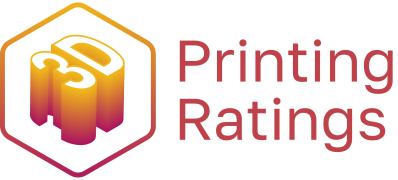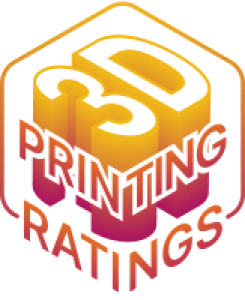FDM vs. SLA
In recent years, the market for 3D printing and additive manufacturing has changed dramatically. Highly capable desktop machines are no longer just for hobbyists; they have evolved into critical business tools. After establishing itself as the go-to tool for prototyping and product development, 3D printing has found applications in manufacturing, dentistry, jewelry, and various other fields.
The two most common types of 3D printers are fused deposition modeling (FDM) and stereolithography (SLA). Both 3D printing technologies have been adapted and refined for desktop use, making them more affordable, user-friendly, and capable.
Now, let’s take a look at FDM vs. SLA 3D printers (also known as filament and resin 3d printers) and how they compare in terms of print quality, materials, applications, workflow, speed, costs, and more, to guide you in deciding which technique is ideal for your business.
FDM vs. SLA: Comparing 3D Printing Technologies Print Quality and Precision.
Each layer introduces an opportunity for inaccuracy when additive manufacturing processes produce parts layer by layer. The method used to create layers impacts each layer’s surface quality, precision, accuracy, and overall print quality.
FDM 3D printers form layers by depositing lines of molten material. The size of the extrusion nozzle determines the part’s resolution, and there are voids between the rounded lines as the nozzle deposits them in this process. Therefore, layers may not adhere completely to one another, layers are generally visible on the surface, and the process cannot reproduce intricate details better than other technologies can.
SLA 3D printing uses a liquid resin that is cured by a highly precise laser to form each layer, allowing for much finer details and more consistent, high-quality results. Therefore, SLA 3D printing is known for its fine features, smooth surface finish, ultimate part precision, and accuracy. These bonds come with a high degree of lateral strength, resulting in isotropic parts that have the same strength regardless of orientation. SLA 3D printing is particularly well suited to engineering and manufacturing applications where material properties are important.
Another way SLA printers ensure reliability is by printing with light instead of heat. Thermal expansion and contraction artifacts, which can occur during the FDM printing process, are avoided by 3D printing parts at close to room temperature.
While FDM printers create mechanical bonds between layers, SLA 3D printers create chemical bonds between layers by cross-linking photopolymers across layers, resulting in fully dense, water, and airtight parts.

FDM vs. SLA: Choosing the Right Printing Technology
Many factors should influence the choice of Printer between FDM and SLA; let’s look at some of them.
Build Volume
Never underestimate Z height when working in three dimensions, and remember that parts can be built in different directions to optimize strength or finish. When comparing technologies, consider what types of parts you want to 3D print today and what you might want to produce in the future. The most prevalent regret is the lack of printer capacity.
Due to the nature of the technology, finding a large format SLA 3D printer is extremely difficult, if not impossible. To begin with, a large vat of liquid resin generates more waste. Second, because materials are more expensive, individual part costs tend to be higher. Finally, while the pinpoint accuracy of a laser is advantageous for higher resolution parts, it also results in significantly longer printing times.
FDM 3D printing has been the preferred method for creating large parts for a long time. Regardless of part or build platform size, it is much easier to achieve repeatable results, and this is one of the inherent benefits of FDM 3D Printers.
Also, there is significantly less material waste, and the time required to produce large or numerous parts is significantly shorter than with many SLA alternatives. Simply put, it’s affordable to print big with FDM, especially if you’re using the Best FDM 3D Printers.
Printing Speed
SLA is known for producing more aesthetically pleasing parts than FDM due to the laser technology’s ability to print layers down to 25 microns. It is easier to estimate how long a part will take to print if you consider its size. When compared to FDM, the speed difference is almost insignificant.
However, FDM technologies are typically capable of offering a variety of nozzle sizes (.6mm, 1mm, and 2mm), allowing engineers to speed up the printing process. FDM is significantly faster than SLA, but it comes with a trade-off. Larger nozzle sizes, of course, result in thicker layer lines. Finally, you must consider your part specifications and strike a balance between resolution and speed.
Material
SLA materials are ideal for niche applications but lack overall strength and functionality compared to FDM. For example, some SLA materials have biocompatible properties that, when combined with their high-resolution capabilities, make them ideal for medical device prototyping and dental applications. In contrast, SLA materials rarely meet the mechanical properties needed for most commercial or industrial applications.
FDM 3D printing is a good choice if you need materials that are representative of the final product. Standard thermoplastics like ABS, PLA, and nylon are widely used in various industries and compatible with most FDM technology platforms. When compared to SLA, FDM’s strength and durability are superior.
Having said all of these, it’s important to add that the list is inexhaustible. Therefore, some of the other factors to consider before choosing between FDM and SLA include:
- Strength and Durability
- Precision and Quality
- Applications and Industries
- Aerospace
- Automotive


